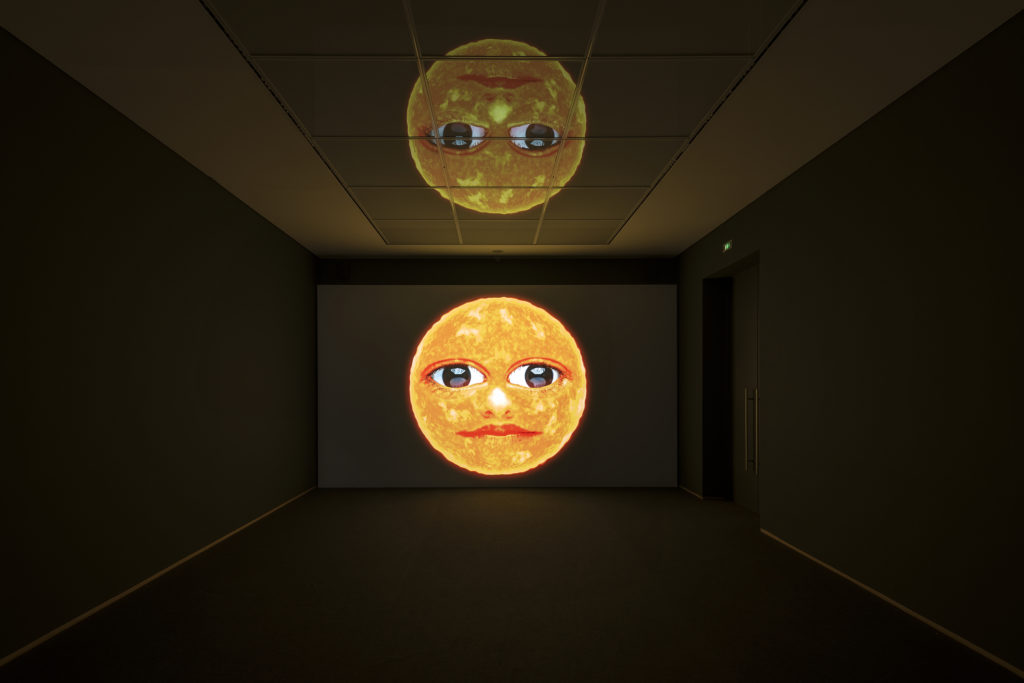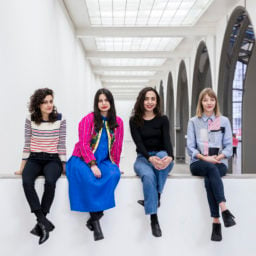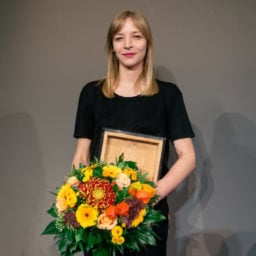Agnieszka Polska’s two films on view at the Hamburger Bahnhof in Berlin are both soothing and harrowing in turn. Contained within a starkly decorated installation that consists of little more than Polyethylene seating, Little Sun and its shorter companion film, What the Sun Has Seen—which the artist describes as a footnote to the former, the core of the installation—operate like a diptych, playing in a looped sequence. It’s a mesmerizing pair of films starring a recurring child-like sun as the lonely protagonist who occupies the entirety of the screen with melancholic eyes, booming half-sung monologues.
Just last month, Polska was the jury-selected prize winner of Germany’s Preis der Nationalgalerie for her installation at the museum. With that comes substantial prestige, a monograph, and a solo exhibition the following year in one of Berlin’s state museums. The prize is awarded every two years to an artist under the age of 40 who lives and works in the German capital, and the previous round was nabbed by Golden Lion winner Anne Imhof.
A few weeks after winning the 2017 edition of the prize, Polska and her fellow shortlisted artists jointly wrote a statement listing the prize’s emphasis on their gender (it was an all-female shortlist) and nationalities (none of the artists are German) in press and speeches, among other grievances.
To be sure, the themes in Polska’s work are refreshingly post-identity politics—her focus is instead on humanity as a collective whole under the eye of an affectionate sun. Addressing the audience like an old friend, it jokes about climate change, sings gospel-like hymns, and comforts us amid our states of emergency.
artnet News spoke to Polska about what’s behind this understated yet powerful work, the poetics of quantum physics, and the social responsibility of artists.
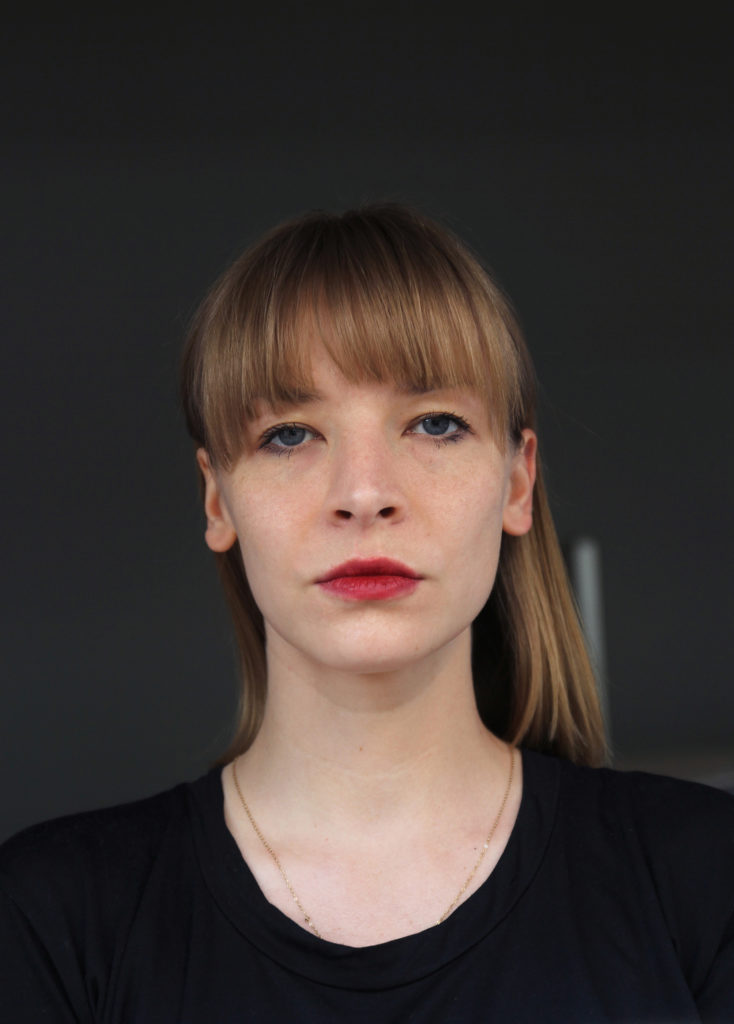
Portrait Agnieszka Polska
© Agnieszka Polska
What were some of the departure points for the films on view at the Hamburger Bahnof?
The starting point for the diptych was the poem of a nineteenth century Polish poet, Maria Konopnicka, who described the harmonious daily routines of modest rural life as if seen from above by the sun. I decided to focus on the figure of a witness—distant but diligent in its observations, a prisoner of the events unfolding before its eyes, unable turn away or to take any action against the misery and suffering it is witnessing. I made it helpless, but not mute. In its sung monologue in New Sun, the sun is deliriously moving through various musical styles and emotional states. It is at times excited, anxious, agitated and, beyond everything else, in love.
Why did you opt for a minimal installation, with very little distraction from the imagery of your films?
Having visually rich and demanding video content, I usually tend to leave the space as empty as possible. The tools to attract the viewer are the sound and the visual imagery of the film itself. I am interested in some soft manipulation techniques, like ASMR related audio and video stimuli and subliminal messaging—nothing illegal! I use them in order to provide a certain quality of experience for the viewer, without a cynical need to play with her subconscious.
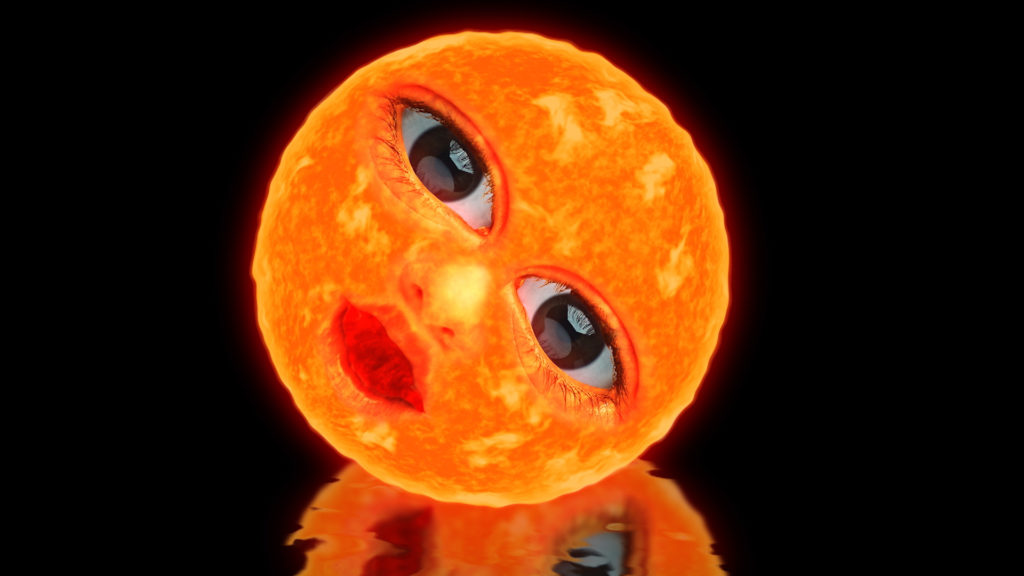
Agnieszka Polska’s New Sun, 2017. Courtesy Żak | Branicka Gallery, Berlin & Overdiun & Co., Los Angeles.
The politically charged undercurrent of the work feels very urgent, given the Trump administration pulling out of the Paris Accord and the ongoing refugee crisis and war in Syria, to name only a few human-made catastrophes that we are witness to. How do you navigate political and ethical issues in your work?
The delirious, permanent state of emergency present in my works derives itself from the political and social environment of our time. In many of my recent films one can find direct references to the environmental catastrophe, the rise of nationalistic sentiments and problems related to overpopulation. Rather than being moralistic, I prefer to prepare the ground for the examination of individual social responsibility, artistic social responsibility and the possibilities for an individual to communicate with and influence her surroundings.
These works do not have a strict political potential that would serve as a trigger for a certain change apart from having the potential to create an immersive experience. I believe that immersion makes these works politically active, as a tool for creating an environment competitive with the environment of seduction that surrounds, for example, organized religions. After some time of having doubts, I started to believe in the political power of art again, or rather of art-related practices. This power lies in the ability to create a common territory of exchange, a territory for involvement in ritual.
What was behind the choice of a young American male actor playing the voice of the sun? It is worthy of note that it wasn’t a female voice or that of a child’s.
It could easily be a female voice as well. In fact, in the beginning I was looking for a voice artist who was a child, regardless of whether they were female or male. I was looking for a singing child and I found teenage recordings of Aaron Ronelle Harrell—a very young actor and Broadway singer. He is not a teenager anymore, though I didn’t know that when I was tracking him down, it doesn’t matter, though; the moment I heard his voice I knew I would love to work with him. He also happened to be American but it was his skills that made me contact him.
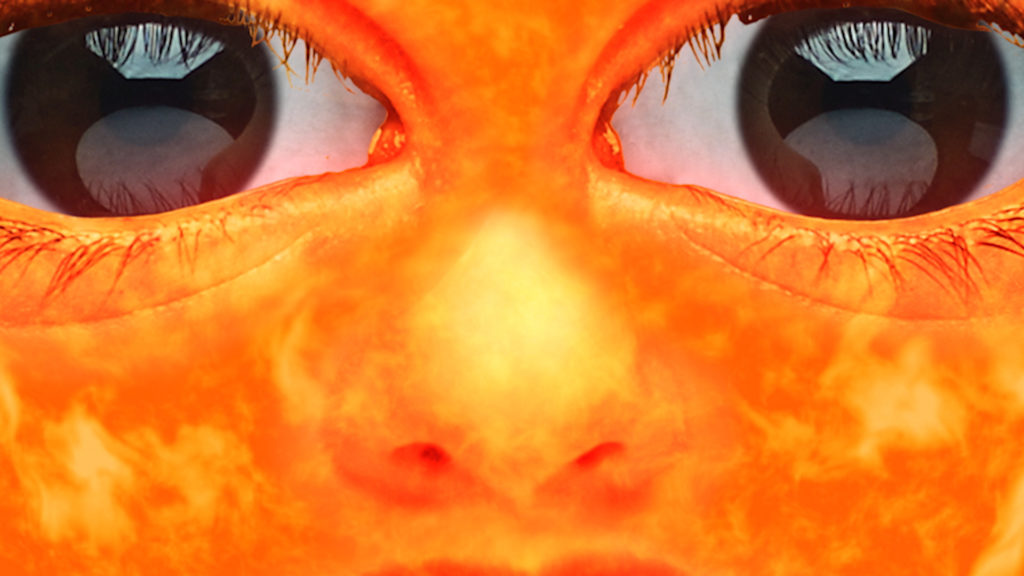
Agnieszka Polska’s New Sun, 2017. Courtesy Żak | Branicka Gallery, Berlin & Overdiun & Co., Los Angeles.
Distance and proximity seem to be very important considerations within the work. The Earth slowly approaches from afar, as do other motifs. The sun seems both huge and at the same time metaphorically very small, young, and helpless.
I think that, rather than focusing on distance and proximity, I focus on differences in scale and try to continuously shift the narrative through different scales. These meditative journeys might start from massive astronomical objects and eventually reach the smallest particles that construct matter, which—in the case of my stories—are always words and letters. The environments I build and describe always have language at their base. This approach derives from the idea that the smallest indistinguishable particles are cloned ideas that function interchangeably in the same way as the letters of the alphabet. In many of my works I describe various stances on the materialization of language. In New Sun, words are extremely important—apart from constructing the Little Sun’s silly jokes and vows of love, they will one day, after the collapse of the system we live in, construct the new order of the world. At least this is what the character declares.
You deal with complex scientific ideas, not as hypothetical concepts but rather investigating them for their poetic value. How did science and physics play into the making of the work?
In the Hamburger Bahnhof installation and some of my other works one can find some references to the phenomena of quantum physics. As you say, it’s a very poetic take on physics so no child should try to learn science from these films. In the case of the What the Sun Has Seen, I refer to the effect in quantum mechanics in which the observer influences events through the act of observing. As we know, a quantum system remains in superposition until it is measured. After the observation takes place, it collapses into one or another definite states. The Little Sun character is therefore, at the same time, a helpless witness and the one responsible for the change it’s witnessing. The references are hidden in the text – mentioned only between the lines.
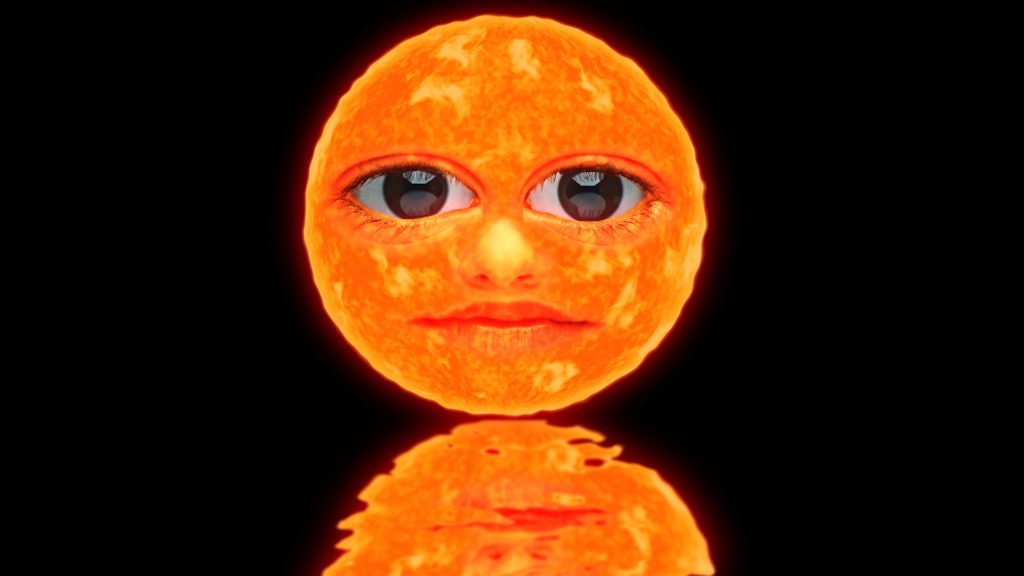
Agnieszka Polska’s New Sun, 2017. Courtesy Żak | Branicka Gallery, Berlin & Overdiun & Co., Los Angeles.
Can you share a little bit about your scriptwriting process for this film?
The text for this film reads very much like a poem, and it’s very hard to talk – at least for me – about the making of a poem. I can tell you that text is usually the base for my films, after having a flash of initial inspiration I concentrate on writing and only when the text is done do I start to animate it. Writing usually takes longer than animating. My texts are packed with references to the things I read and witness at the time, to the news and to private matters.
The Sun seems to be trying on different roles in order to please its viewers. It tries to amuse us, to act intimately, and then it exerts this omniscience with God-like warnings. What were you trying to achieve through these multiple personalities?
While I was writing for New Sun, I was reading the poetry of Rumi and I think the structure of having various personalities in one character was very much informed by his poetry. I got very much into an idea of having a whole internal dialogue between the different identities of one being and having this one character augmented into multiple voices. As we only see, through the whole monologue, the face of the sun, the character somehow becomes just a voice, bringing things into reality by naming them in different tones.
“Origin Story” is a column in which we examine the backstory of an individual work of art. The Preis der Nationalgalerie 2017 exhibition is on view at the Hamburger Bahnhof in Berlin until January 14, 2018.
